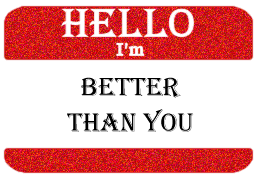We know them as daily and lamentable interpersonal events. We can recall moments of being observers, and perhaps even participants. We may remember Alex’s peers snickering behind his back because he was quirky and “just weird.” Or, the cool girls looking down on Maria because she didn’t dress as well as they did. We recall David’s lack of social status as being painfully obvious to everyone in the neighborhood, especially him. Our peers sitting at the lunch table and spreading stories they suspected weren’t true about Kristen. But because they were quickly and awkwardly silent when she entered the room, she never had the opportunity to contradict the details before word spread. Perhaps we remember Andre getting mocked daily because his family had different customs, traditions, and beliefs than the “popular group.”
We remember name calling. Taunting. The exertion of will and power.
If you don’t remember these sorts of events, look closer. Because, I’m not talking about children.
I’m describing us. You know, the role models that children are supposed to strive to become.
In fact, I’m tired of children being asked to be better than us, when generations of bullying children have become bullying adults. However, we have new and whitewashed names for the phenomenon, such as, “Politics,” “The Water Cooler,” “Tabloids,” “Business, ” or “Reality Television.” I would assert that the typical adult breakroom can be more destructive than a high school cafeteria.In our world it is perfectly acceptable to gossip about others. To tear them down. To roll our eyes behind their backs. To not find solutions to differences by focusing on thoughts, not the people behind them. To insult, rather than debate. To excessively belittle an opposing team’s fan at a sporting event, in front of a thousands of children’s eyes. It is normal to have an overheated confrontation in a parking lot, a stop light, or a checkout lane. And, often, the loudest cries of, “He cut!” come from the parking lot of the school, not the hallways.
Why? Because, we’re old enough to believe in our perceptiveness about others. In short, we think we’re right.
Never mind the irony that roughly 80% of us believe we’re better than average.
In essence, we’re asking children to ignore what children see all around them.
Sanctioned bullying.
We tailgate to make the car in front of us go the speed we would prefer. We name call and ridicule people through syndicated media programs, rather than critiquing their ideas. We create celebrities and then relish in their fall. We gossip. We slander. We intimidate. We’re asking the impossible from our children: do as you’re told, not as you see.
Make no mistake, bullying is a legitimate problem, and many adults are doing their best to counter the culture I describe here, but few reading this will identify themselves as contributors to the problem.
The stories we hear about children being looked down on, humiliated, or made to feel second rate, are heartbreaking. But, at what point do we stop calling it bullying? It seems to me it’s sometime around when they’re old enough to vote.
What a coincidence.
Turn on your television. Sit in a parking lot after school Watch a session of Congress. Go to a football game. Look at magazine covers in the checkout aisle. Eat in a breakroom.
It seems as if bullying is a life skill.
I believe kids get a bad rap. Bullying should not occur, and schools need to work diligently to ensure that no child is subjected to such behaviors. But most children are kind, compassionate, supportive, accepting, and tolerant. Three year olds might call a passing woman “fat,” because they’re too young to have the requisite filter, not because they’re trying to feel better about themselves.Our children are often amazing citizens who can collaborate, cooperate, and produce. If you’ve ever seen the fifth grade girl welcome the non-english speaking student, and guide her through her first days, you might not believe it. If you’ve never seen a group of kindergarteners support a child with Down Syndrome, you don’t know what you’re missing.
Children can often represent the very behaviors we should emulate, and, it’s why I relish working with them, everyday. Contrary to popular beliefs, schools aren’t crawling with bullies who seek to exert their will on others. They’re full of our kids. Wonderful kids.
But, be warned.
They grow to be more like us with each passing day.









